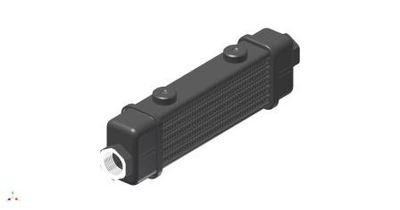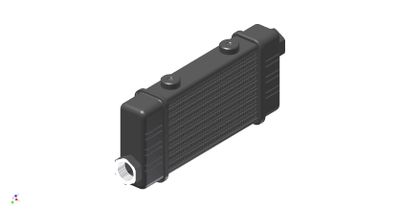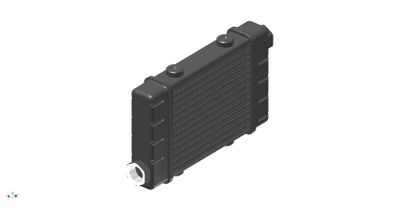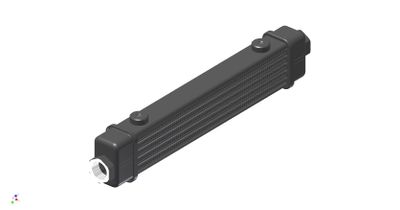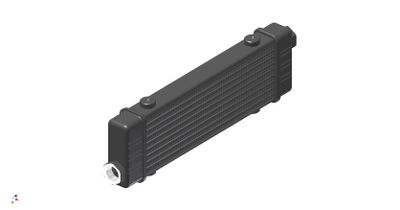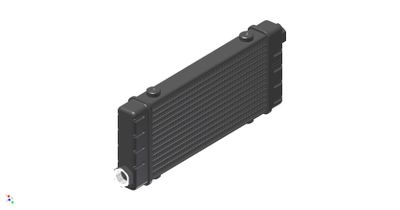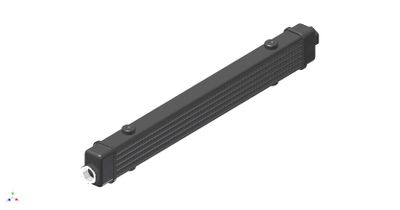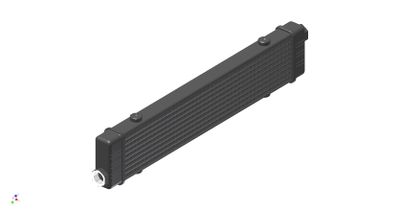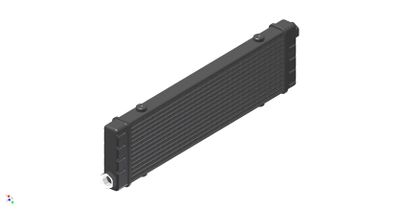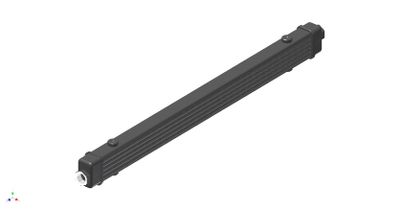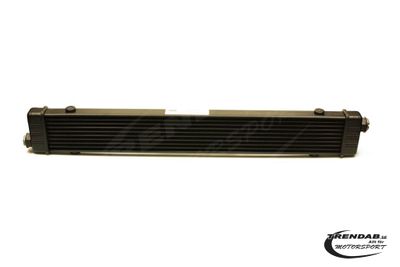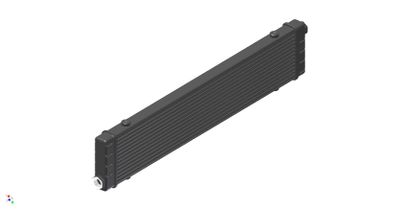Oljekylare slimline Setrab
Utvecklad för applikationer där utrymmet är begränsat. En högpresterande Slimline-kylare.
Anslutningarna sitter på vardera gavel.
Kylaren tål 8 bars tryck och är tillverkad i aluminium. Tänk på att inte montera kylaren stumt.
| Technical Specifications | |
| Working Pressure |
6-row: 0-8 bar(g) dynamic |
| Pressure Pulsation Endurance |
6-row: 200k pulsations, 0-8 bar(g), 2 Hz, 60°C oil temp |
| Max Pressure | 10 bar(g) |
| Burst Pressure | 25 bar(g) |
| Pressure Test |
6-row: 8 bar(g) |
| Leak Test | 4 bar(g) |
| Working Temperature | -40°C to 150°C |
| Corrosion Endurance | 20 days according to SWAAT G85-94 A3 |
| Inner Cleanliness | ISO 4406 16/14 |
| General Dimensional Tolerances | ISO 2768-v |
| Material | Aluminium alloys |
| Max Connection Tightening Torque | 40 Nm |
Working Pressure
The range in which the cooler is designed to operate (above atmospheric pressure). The word "dynamic" implies that the pressure can fluctuate between the limits.
Pressure Pulsation Endurance
How many times the cooler can withstand pressurizaton between a lower and an upper limit. The Herz number indicates the frequency of pulsations per second.
Max Pressure
The maximum operating pressure.
Burst Pressure
The maximum pressure the cooler can withstand before bursting.
Pressure Test
The pressure the cooler is exposed to after brazing to ensure brazing joint integrity.
Leak test
The pressure level the cooler is tested at for leaks after the pressure test.
Working Temperature
The temperature range the cooler is designed to operate within. Operating temperatures outside of the defined range will negatively affect the strength and durability of the cooler.
Corrosion Endurance
How long the cooler can withstand a salt spray test before starting to leak. The test simulates the expected lifetime exposure of a typical vehicle to a mixture of water and road salts.
Inner Cleanliness
The maximum amount of particles the cooler is expected to contain.
General Dimensional Tolerances
The standard to which the cooler conforms regarding dimensions specified on the technical drawing.
Material
The material the cooler is made of.
Max Connection Tightening Torque
The maximum torque allowed when tightening the connection on the cooler.


